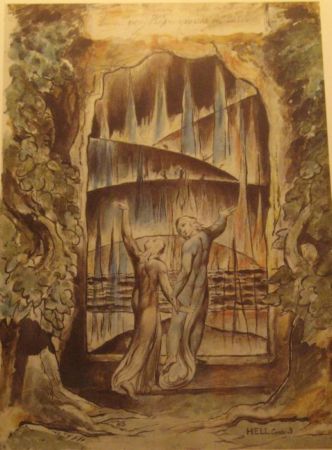c) Several passages of the Lectura may be collated according to an analogical procedure typical of the distinctiones used by preachers. However, since the Apocalypse contains expressions, such as Leitmotive, which are repeated several times, the choice is not casual as it is determined by the scriptural text. As suggested by Olivi, especially in the Prologue, in order to make the meaning of the text more intelligible, the choice is made through key-words that link the passages to be collated, a ‘mutua collatio’ of parts of the Lectura enriches the meaning associated with the words and makes thematic development possible.
c1) Collation is prompted by the scriptural text,
due to the repetition of the themes: fulgura, voces, tonitrua; terremotus; vox aquarum multarum;
or the introduction of passages from identical or similar verses: Rev. 1:6↔5:10; 3:3↔16: 15; 4:6↔15:2;
or consistency with passages: Rev. 1:16-17 (the exegesis of the tenth and eleventh perfections of Christ as the supreme shepherd), or since they deal with the same subject: Rev. 6:9-11 (the opening of the fifth seal); Rev. 21:12-16 (description of heavenly Jerusalem).
c2) Collation is established by keywords that link the passages to be collated, such as the various meanings of vox; the expression in medio;
or keywords like amen1, amen2, cinis, odium, reverentia;
or the presence of similar themes: Rev. 9:14↔20:1-3 (insurmountable boundaries); Rev. 16:17↔1:16 (the hemisphere of air serene).
c3) Collation is suggested by the exegetist as in the case of Rev. 7: 2↔10:1 (the angel of the sixth seal and the angel whose face was as the sun both of whom identified with Saint Francis).
c4) The author decided the collation: Rev. 9:13 (Count Ugolino recounts the death of the sons) + 6:14 (the called for punishment of Pisa) + 7:12 (“the fair land where sì is heard”). Numerous symmetrical passages, also used elsewhere in the poem, are found in the second case.
|
d) Although the Lectura maintains the same sequence of the twenty-two chapters in the Apocalypse, Olivi suggests a different way of understanding and grouping the text, based on the seven periods of the history of the Church, as prefigured in the Old Testament.
The Apocalypse is divided into seven visions: the seven Churches in Asia; the seven seals; the seven trumpets; the woman clothed with the sun (the seven battles sustained by the Church); the seven vials; the judgment of Babylon in the seven heads of the dragon and heavenly Jerusalem. The first six visions may, in turn, be divided into seven moments, each of which refer to one of the seven periods of the history of the Church. By assembling all the first elements of the first six visions (church, seal, trumpet, war, vial, the first phase of the judgement of Babylon), all the second, all the third and so forth, seven groups of theological themes are obtained and coincide with all the themes concerning each of the seven periods. Two more groups must be added to the first seven: the exegesis of the seventh vision (with no division) and the exegesis of the chapters in the scriptural text, or parts thereof, that introduce the following explanations of each vision in septenaries which Olivi defines as roots (radicalia) or source (fontalia). In this way nine groups are obtained: the proemial parts, the seven groups of septenaries and the seventh vision. The extensive Prologue to the Lectura, divided into thirteen Notabilia, may also be rearranged according to the seven periods. Therefore, the Lectura contains the principles and criteria so that perceptive readers may draw another book, made of the same material but recomposed and divided in another way.
The Commedia is actually structured in a different way than appears to readers. Dante’s journey was made in cyclical septenaries which are equivalent to Olivi’s seven periods of Church history, the way he classified the exegetical material. The poem is organised according to progressive parts in which, by means of keywords, the themes of each period prevail and break the literal boundaries established by the cantos and circles, terraces and heavens. Like the mesh of a suit of armour, each period is linked both to the previous and to the subsequent one. Therefore, maps that include the spiritual order of the Commedia may be drawn. This research has led to a Spiritual Topography of the Commedia where each verse, or group of verses, hyper-textual links lead to the exegetical cloth from which the “good tailor” made the “gown” (cf. Par. XXXII, 139-141).
|

